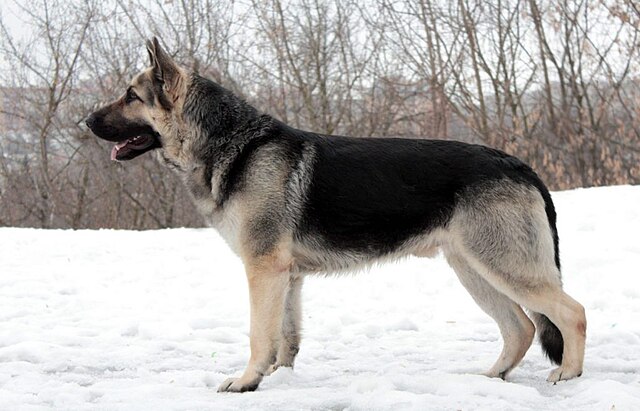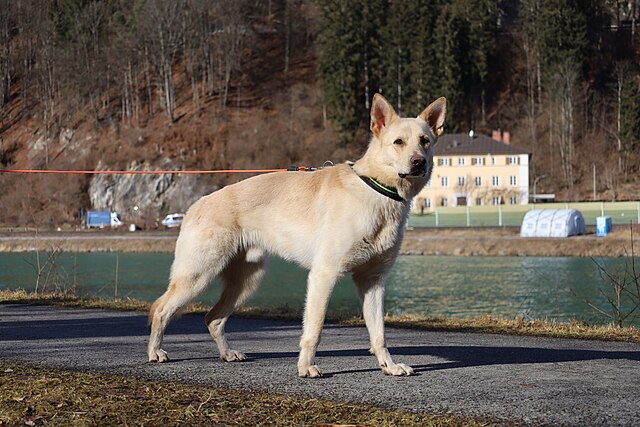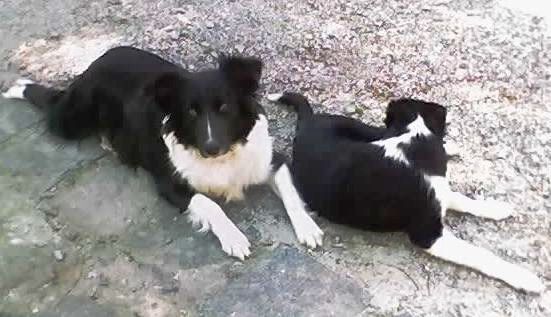It is said that “one Blue Lacy can do the work of three cowhands”. The state dog of Texas, this workhorse of a dog was developed by the four Lacy brothers in the Texas Hill Country in the mid 1800’s. It is said that Greyhound, scenthound (although which breed/s remain unknown), and even coyotes went into the mixture when developing the breed. They have been around for over 100 years and have always been used as multipurpose ranch dogs. Although their numbers dipped very low when machines began taking the place of working dogs, they experienced a resurgence when farmers and hunters re-discovered them. They are fantastic at tracking game, blood-tracking injured game, and will not hesitate to bay wild hogs! Because of these skills, they are the most popular dog with United States Trappers. They are also adept at herding, bird hunting, treeing, and search-and-rescue.
Lacys love to work, and in fact need a job to do to keep them happy and out of trouble. They are highly intelligent and easy to train, although they are known for being dominant. Owners need to be equipped to handle this – enlisting a fair yet firm set of household rules. While this breed absolutely needs clear boundaries and a firm no-nonsense training style, they do not do well with outright abusive training or yelling. They need a balanced approach. When left to their own devices this is a fairly independent breed. It is only with training that one can take their natural instincts and cleverness and mold them into the amazing working dogs that they have the capability to be! This breed can succeed and thrive in dog sports like agility, tracking, obedience, herding, flyball and hunt competitions.
The Blue Lacy has tons of energy and is quick on his feet, meaning he needs an owner who can keep up with his high exercise requirements. Without both physical and mental outlets he will quickly become bored and destructive in the home. This is absolutely NOT a dog that can be thrown into a kennel (indoor or outdoor) for the majority of the day, or otherwise be left to his own devices all day as he is not only active, but also very social. Puppies are particularly active and need even more exercise, but this long-lived breed (averaging 18 years) will likely be energetic, headstrong and “enthusiastic” for a majority of his life. If his needs are met, however, he is very enjoyable as a house companion.
The Lacy has a territorial streak and he might become protective when strangers enter his property. He’s not a fan of new people in general, especially when they come near his home. Remember that this is a headstrong dog who needed a tenacious streak in order to take on full-size cattle or ornery wild hogs. It’s very important to socialize this breed when young and give him ongoing obedience training. Although he is sweet and affectionate with his owners, an owner should not let him get away with overly territorial behavior. Alert and warning barks are one thing – and should be expected – but don’t let this breed become overly protective when not warranted, nor let him become possessive of you!
Blue Lacys are medium-sized dogs that need room to run on a regular basis. Everything about their build shows that they are constructed for endurance, speed and function. The deep chest allows for ample lung space. The topline is level and strong, allowing for free, smooth movement. Legs are powerful, atop feet with well-arched toes. Shoulders are muscled and well laid back, balanced by strong and likewise well-muscled thighs. Interestingly, the Blue Lacy actually comes in three colors: blue, red or tri-color! Even reds and tris are still called Blue Lacys as all Lacys have blue genetics. Minimal white markings are always present although excessive white or white above certain areas of the body are disqualifying faults.
The Lacy is a breed for an experienced dog owner only – particularly an owner who is just as strong-willed as he is – and someone who is active and outdoors-y. Because of this breed’s energy level and intensity, he is not recommended for families with small children. As might be guessed, this is not a dog for apartment living and ideally should live on a property with a large yard to run in. This breed does have a high prey drive and probably won’t be a good match for those with small pets, nor is he always the most friendly with other dogs. Keeping in mind that this dog also tends to bark excessively and is more prone to wandering when not fenced, along with needing excessive mental and physical exercise – it’s no wonder they are pegged as “not for novice” dogs! But for those people who can handle them, this is a dog that has it all in terms of working ability!




